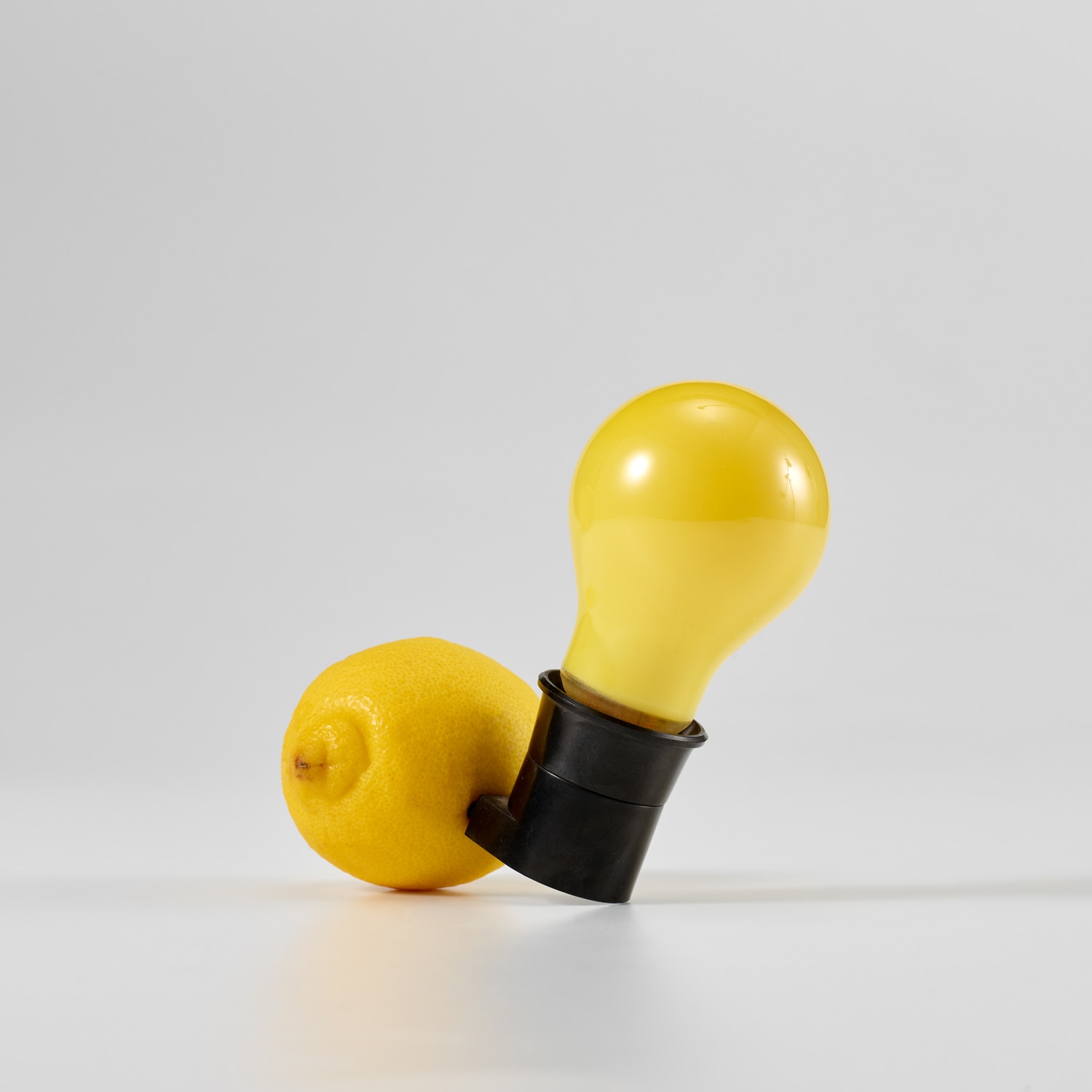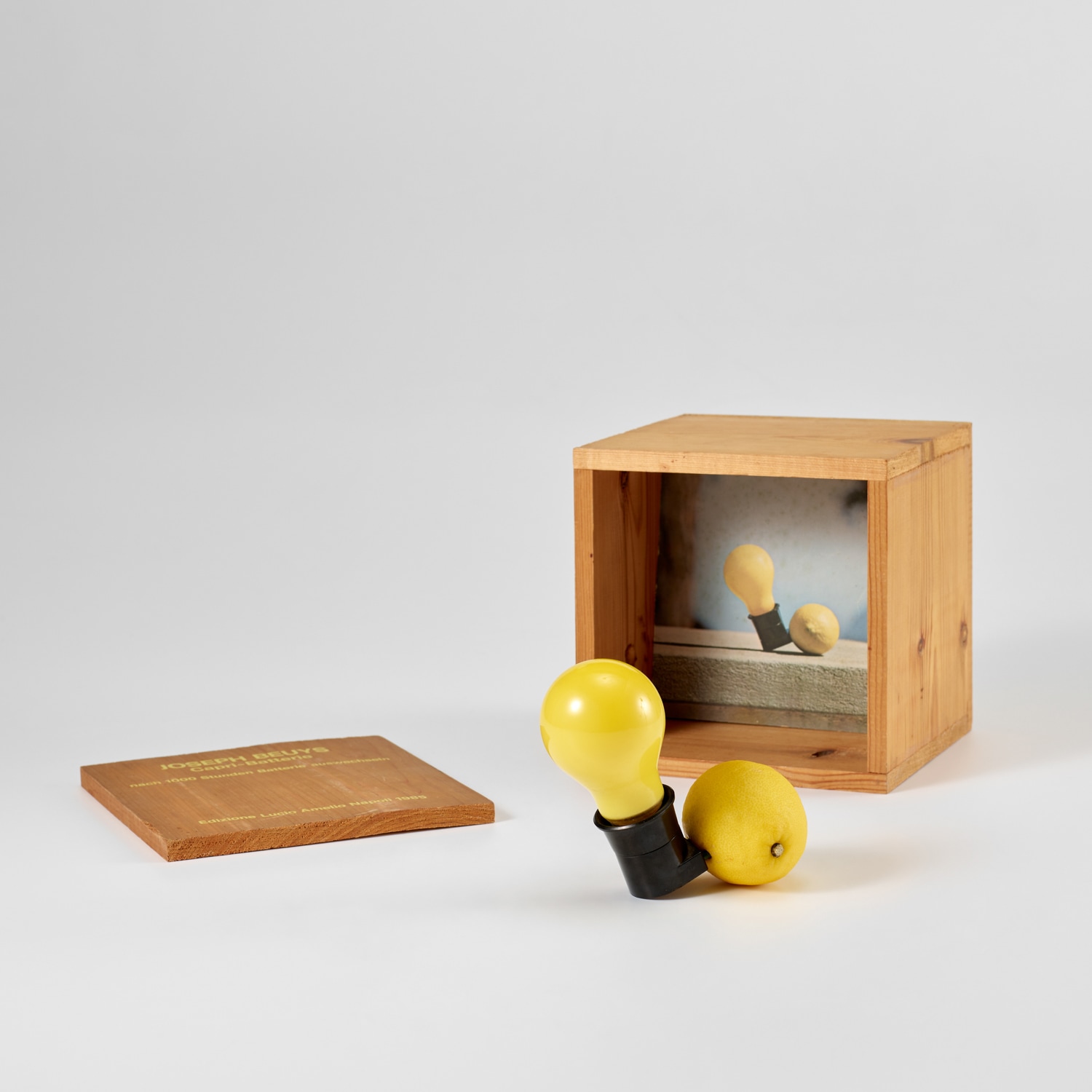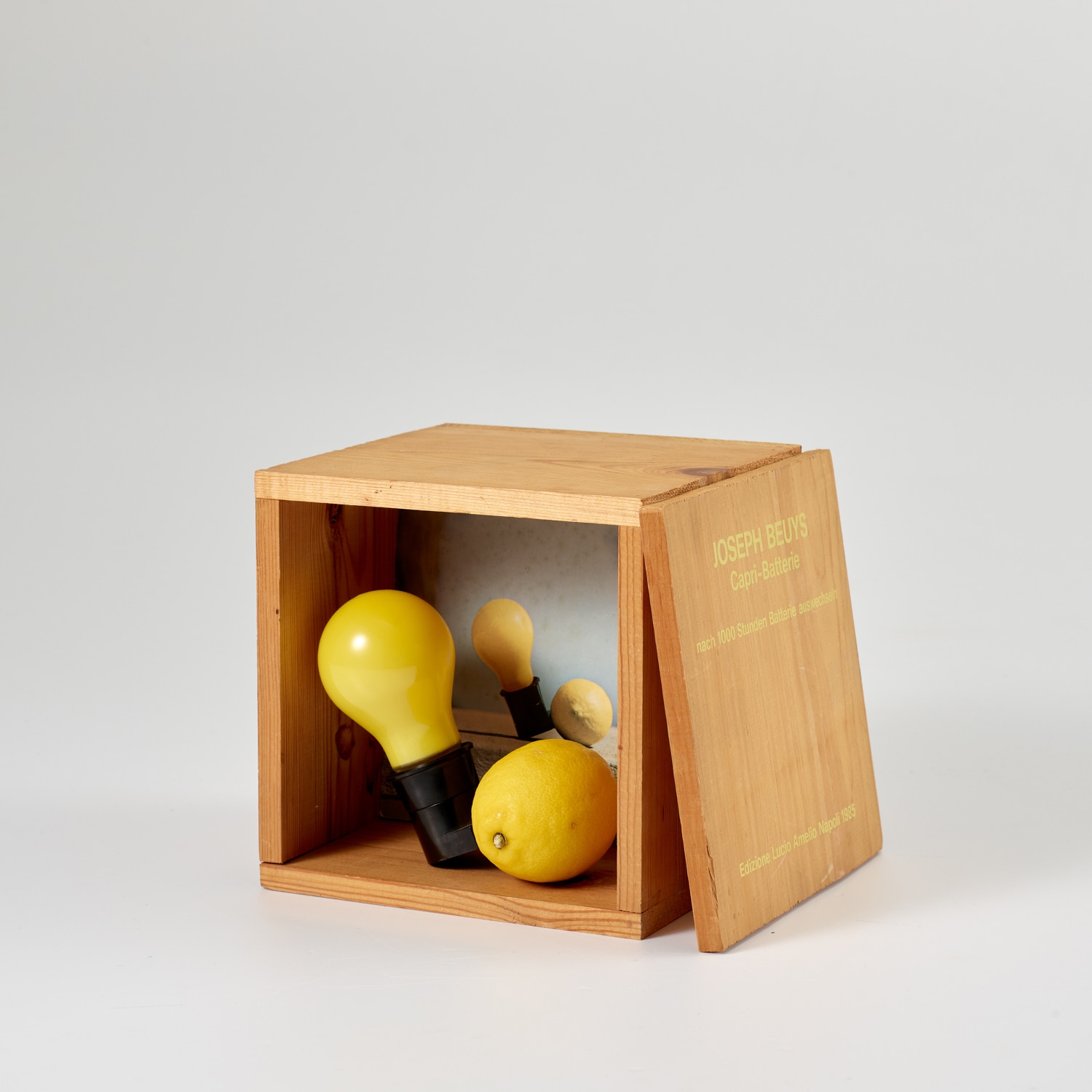





146
Joseph Beuys
Capri-Batterie (Capri Battery) (S. 546)
1985
Multiple comprising light bulb (Mazda) without the manufacturer's inkstamp, plug socket, and exchangeable lemon, all contained in the original wooden box with yellow printed title.
dimensions variable
light bulb and plug socket 11.7 x 6.6 x 5.8 cm (4 5/8 x 2 5/8 x 2 1/4 in.)
light bulb and plug socket 11.7 x 6.6 x 5.8 cm (4 5/8 x 2 5/8 x 2 1/4 in.)
Signed and numbered 132/200 in pencil on the accompanying Certificate of Authenticity (there were also some artist's proofs), published by Edizioni Lucio Amelio, Naples.